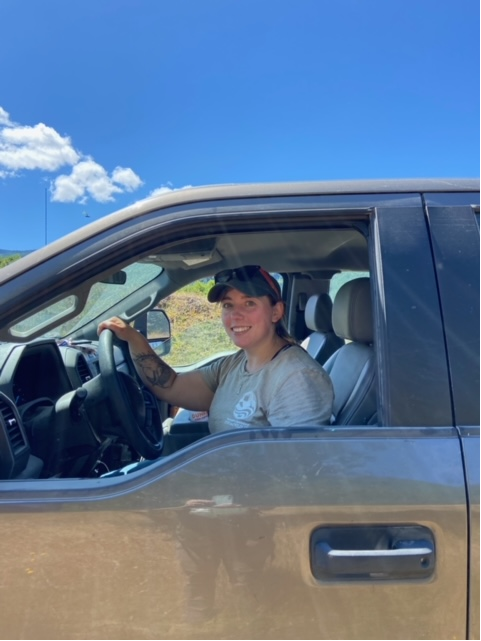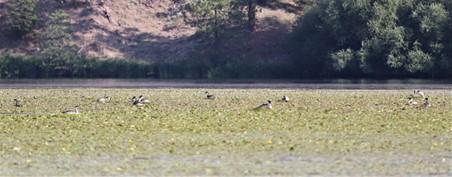
Wildlife Program report: Jul. 1-15, 2023
Conserving Natural Landscapes
Browning and Andersen have been crafting a request for a proposal for a Trails Conditions Assessment Contract with Methow Valley Trails Collaborative in the Methow Valley. Browning and Andersen continue to manage the Trails Conditions Assessment Contract for Quincy Lakes with TREAD (Trails Recreation Education Advocacy and Development).
Providing Education and Outreach
The Ambassador Program is entering its third week of programming. Volunteers and Washington Trails Association staff members are making meaningful outreach connections with visitors.
Managing Wildlife Populations
Western Grebes: Biologists Lowe and Brinkman conducted western grebe surveys on two lakes to document nesting activity and count the total number of western grebes observed on each lake. The grebe nesting colony on Long Lake has grown again since the last survey was conducted in 2021. Sprague Lake was surveyed for nesting western grebes for the first time this year, and although no nests were discovered there were unusually large numbers of grebes observed which is what prompted this initial survey. The emergent vegetation looks too dense for grebe nests so this lake may just provide suitable summer habitat for non-breeding birds.

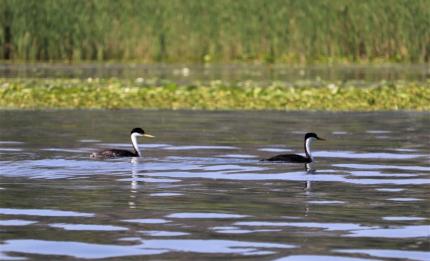
Chronic Wasting Disease: Natural Resource Technician Janowski collected a Chronic Wasting Disease (CWD) sample from a roadkill deer in GMU 121.
Grizzly Bear Hair Corral: Wildlife Biologists Prince and Turnock took advantage of the cooler weather and deployed a hair corral in Pend Oreille County for grizzly bear monitoring. They also checked an established rub tree and were delayed by road destruction and maintenance.
Providing Recreation Opportunities
Hunt By Reservation Only: Natural Resource Technicians Nizer and Rumiser created hunting calendars for the Whitman County landowners. These calendars will be given to the landowners with the dates blocked out marking the agreed days which can be hunted throughout the upcoming hunting season. These dates can be viewed on the WDFW Private Lands Hunting website.
Natural Resource Technician Nizer created a draft Hunt by Reservation Only contract for Mica Peak and sent it to the Director of Spokane County Parks Chase for reviewal. Once Spokane County Parks reviews and agrees with the draft contract, it will be signed off by both parties and deer and turkey hunting access will be allowed for 2023-2028 hunting seasons.
Loon Lake Dock Repair: Water Access Area taff members Dziekan and Brant fixed the broken section of the gangway adjacent to the WDFW boat ramp at Loon Lake. Dziekan had stashed some old boards at his office after an earlier project. He and Brant cut some to size and replaced the broken plastic tread area of the dock. Ingenuity in action!
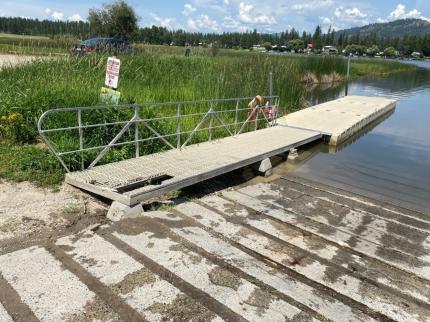
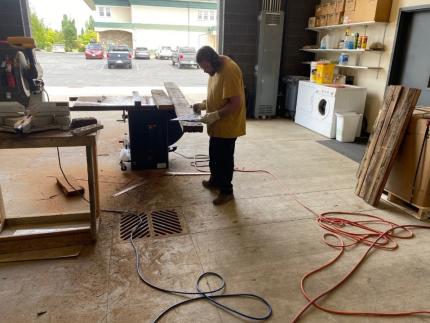
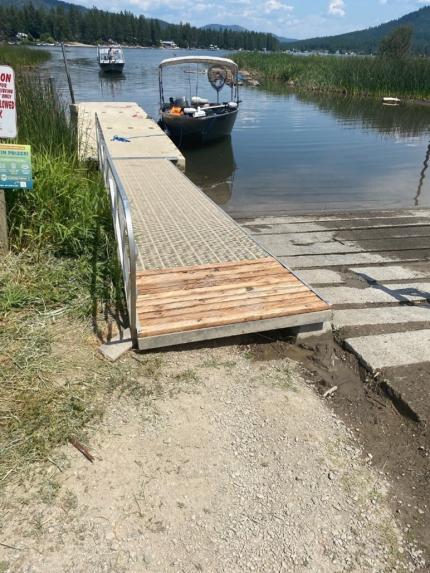
Master Hunter Selection Letters: Wildlife Conflict Specialist McCarty sent out letters of success and expectations documents to selected Master Hunters in Region 1.
Turnbull Turkey Access: Interim Private Lands Biologist Nizer coordinated with the Turnbull Wildlife Refuge to allow turkey hunting access for fall of 2023. Nizer coordinated with WDFW staff members to create a memorandum of agreement. Nizer created the maps for the turkey site and wrote up the legal description of the property.
Providing Conflict Prevention and Education
Livestock Direct Loss Claims: Wildlife Conflict Specialist Wade met with one producer this week to assist with completing their direct loss claims packet for a confirmed wolf depredation. Wade also assisted a producer with initiating a direct loss claim for a confirmed cougar depredation that occurred this week. Wade also followed up with Statewide Wildlife Conflict Analyst Todd on the claims.
Bear Damage: Natural Resource Technician Harris picked up an electric fence deployed at a property to prevent a black bear from getting into a porch freezer. Harris discussed permanent solutions for preventing future bear damage with the landowner and provided them with informational materials to build their own electric fence.
Wildlife Conflict Specialist Kolb has been working with a Walla Walla County producer the last couple of years to address black bear damage in mountain commercial strawberry fields. Last year was especially bad in terms of crop damage, and with the elimination of spring black bear season, there was essentially no pressure on the bears. Furthermore, a producer cannot submit a commercial crop damage claim for black bear damage since compensation for crop damage caused by black bears is not covered in existing rules, laws, and regulations (i.e., WACs & RCWs). This year, the producer installed a carnivore specific 5-wire electric fence incurring a significant out-of-pocket-cost to the producer. WDFW provided some material support, specifically a high-powered energizer. Last year the field yielded 15 flats of strawberries (due to extensive bear damage), and this year the field yielded 450 flats of strawberries. The producer is very happy with the result of this year’s yield, the effectiveness of the fence design, and they are appreciative of the limited support WDFW was able to provide.
Conserving Natural Landscapes
Revere Wildlife Area: Natural Resource Technician Wagner finished spot spraying Scotch thistle and Rush skeleton weed at the Revere Wildlife Area. The Scotch thistle was dying slowly but was already beginning to flower, so Wagner decided to spray it again to prevent the weeds from going to seed.
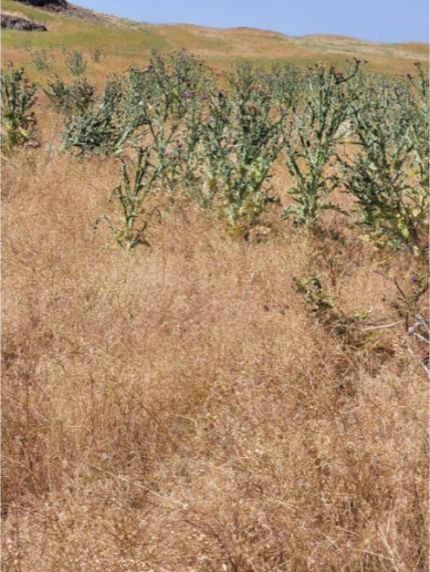
Eloika Lake: After performing routine field work at the Eloika Lake access site, Brant noticed that the ADA paint of the concrete parking area was faded beyond recognition and needed to be addressed. Brant was able to round up the supplies he needed, and he painted ADA parking spots.
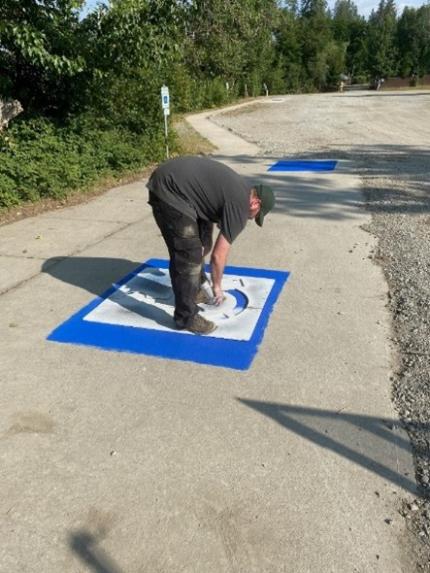
Providing Education and Outreach
Seasonal Fire Restrictions: Sherman Creek Wildlife Area and North Region 1 Water Access Area staff members posted new seasonal fire restriction posters at entry points to our lands on Thursday, July 6. Activity restrictions started on Friday, July 7.
Spokatopia: Access Manager Dziekan worked a booth at Spokatopia, an outdoor activity focused event held on the banks of the Spokane River. Dziekan set up the booth on Friday and staffed it on Saturday. Spokatopia is geared towards mountain bikers and paddle boarders, but the WDFW booth stayed busy. It was very popular with the kiddos, who enjoyed touching the pelts and skulls. Dziekan had some good conversations with attendees, even though the group was a bit different from our usual shows where WDFW has a presence. Overall, a good show.
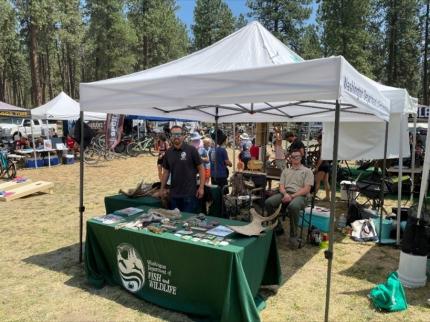
Swanson Lakes Wildlife Area Kiosk: Wildlife Area Assistant Manager Rimmelspacher and Natural Resource Technician Wagner worked on the renovation of the kiosk located on Swanson Lakes. The kiosk and the signs that were hung on it were in poor shape. After a new layer of paint, new signs, and clean plexiglass the kiosk looks brand new.
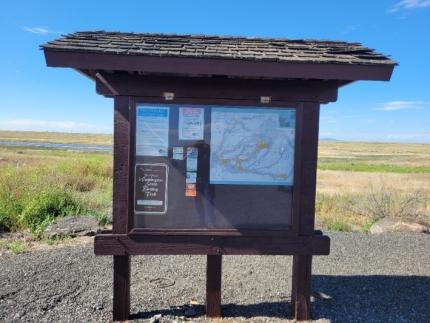
Conducting Business Operations and Policy
Annual Evaluations: Wildlife Conflict Supervisor McCanna spent three days meeting with Private Lands Supervisor Earl, Wildlife Conflict Specialists Kolb, McCarty, and Wade at their offices to perform annual evaluations. McCanna worked with staff members on expectations for the upcoming year.
Managing Wildlife Populations
Remote Fisher Cameras: The L.T. Murray Wildlife Area crew retrieved four remote trail cameras and scent dispensers from the Wenatchee National Forest west of Naches. The cameras were deployed by District 8 Wildlife Biologist Wampole last fall, to gather more information on Cascade Mountain Range fisher populations. No fisher presence has been detected yet, but there have been a few interesting pics.
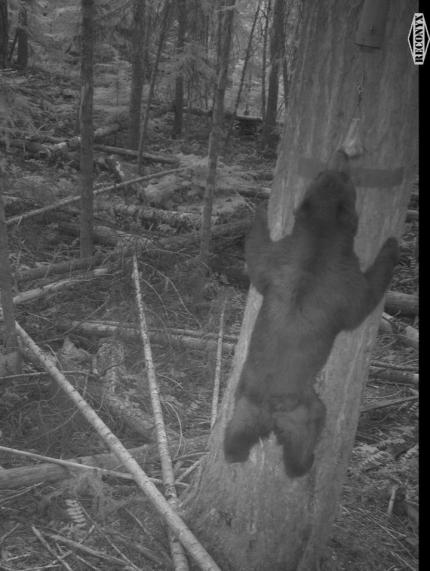
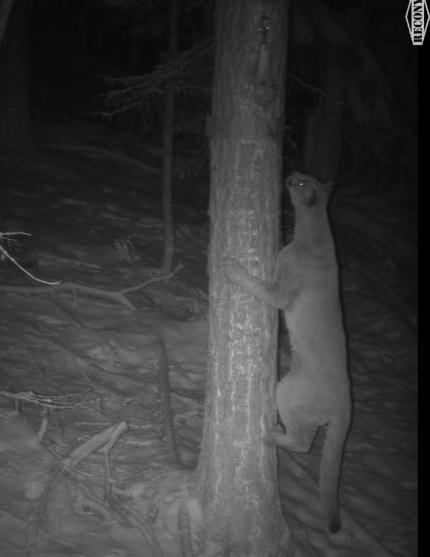
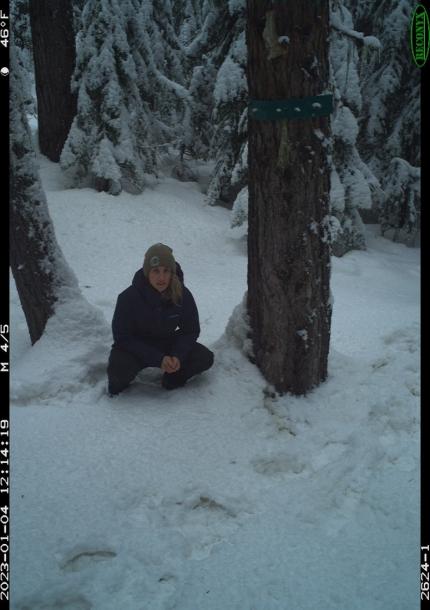
Providing Recreation Opportunities
Wenas Recreational Use Monitoring: Wenas Wildlife Area Natural Resource Specialist Frame deployed serval pieces of road monitoring equipment throughout the wildlife area. This data will show how much use our roads receive during specific times of the year.
Providing Conflict Prevention and Education
Rattlesnake Hills Elk: District 4 Wildlife Conflict Specialist Hand continued to monitor elk activity and haze elk out of winter wheat crops near the Hanford National Monument. New Damage Prevention Permits were issued to landowners in Elk Area 3721 and minimal harvest has occurred likely due to nocturnal elk movements and hot weather conditions. Late night/early morning hazing patrols will continue by landowners and Hand. Fox lights have been employed along heavily used trails used by elk leaving Hanford to enter crop fields.
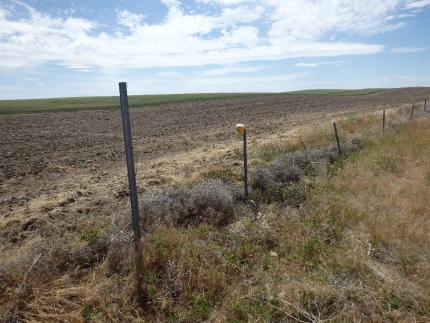
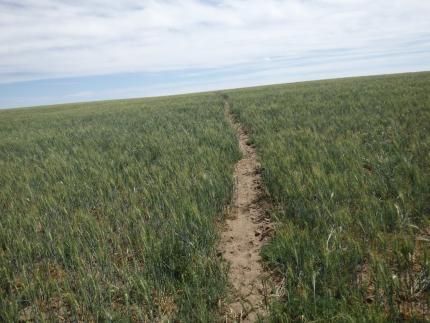
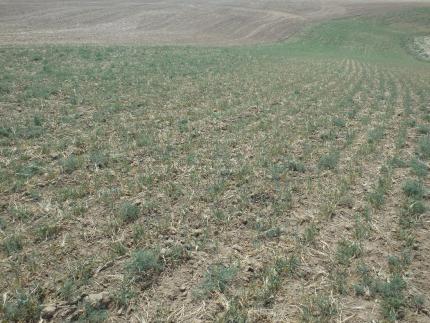
Cold Creek Elk Damage: District 4 Wildlife Conflict Specialist Hand received and responded to a complaint that a small herd of elk knocked over a section of elk fence and entered a large tree fruit and wine grape operation near Cold Creek. Most of the animals were hazed back out of the area and the fence has been repaired. A couple of Damage Prevention Permits have been issued to remove any remaining culprits.
Horn Rapids Deer Complaint: District 4 Wildlife Conflict Specialist Hand responded to a complaint from a wine grape vineyard near Horn Rapids concerning deer damage in a newer block of young grape plants. Several non-lethal hazing techniques are currently being employed with diminishing results. Damage permits were issued as well as planning for youth hunting opportunities.
Kittitas County Conflict: District 8 Conflict Specialist Wetzel worked with several hay growers who were having problems with elk in crops. Elk were reported in Badger Pocket, Kittitas, Peoh Point, and the Teanaway areas.
Yakima County Conflict: District 8 Conflict Specialist Wetzel worked with several hay and orchard growers who were having problems with elk in crops. Elk have been observed in the Cowiche Road area as well as the Naches River area.
District 8 Goat Depredation: District 8 Conflict Specialist Wetzel investigated several goats that had been killed by unknown predators. In two instances, a cougar trap was set after two goats were killed on separate nights.
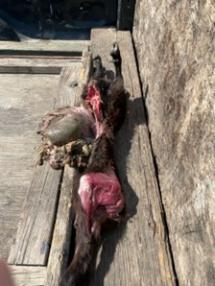
District 8 Bear Issues: Upper Kittitas County campgrounds are experiencing many bear issues. All US Forest Services (USFS) campgrounds have reported bears in camps, in dumpsters, and wandering around campsites during daylight and nighttime hours. Bears were hazed and materials were provided to camp hosts to help reduce food attractants.
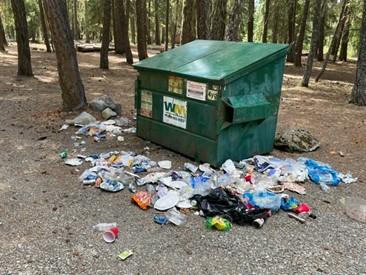
Conserving Natural Landscapes
L.T. Murray Weed Control: LT Murray Wildlife Area Natural Resource Technician Blore and Natural Resource Specialist Nass continued weed control efforts, but hot dry weather is slowing weed growth, so the crew is able to focus on other tasks.
Emergency Fire Restrictions: The L.T. Murray crew posted emergency fire restriction signs at wildlife area access points.
Mesa Lake Beaver Deceiver: Sunnyside Snake River Wildlife Area Assistant Manager Jahns and Natural Resource Technician Manderbach cleared a water control structure in the Mesa Lake Unit that was completely blocked by beaver debris. The blockage had resulted in flooding within the unit. Once the water flow was restored, Wildlife Area Manager Kaelber, Jahns, and Manderbach installed a beaver deceiver structure at the outflow of the 7-acre pond. Similar structures have proven to be successful in preventing unwanted blockage and flooding from beaver activity within the wildlife area.
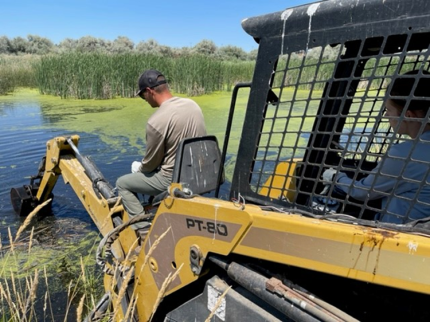
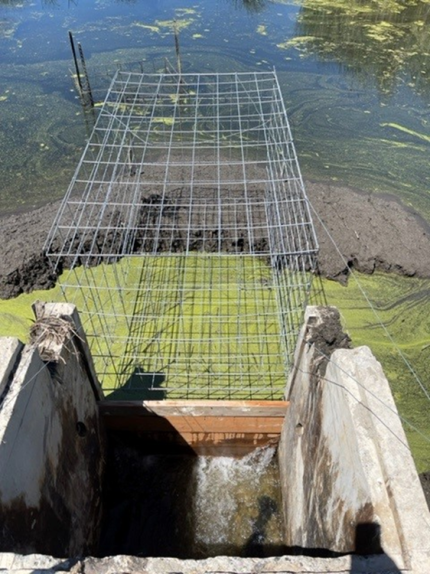
Mesa Lake Russian Olive Removal: Sunnyside Snake River Wildlife Area staff members used an excavator to remove Russian olive trees along the 7-acre pond of the Mesa Lake Unit.
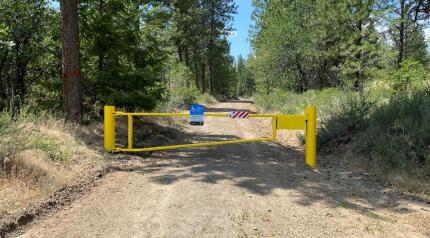
Conducting Business Operations and Policy
New Oak Flats Gate: Oak Creek Wildlife Area Natural Resource Technician Boggs installed a new gate at Oak Flats with the assistance of Natural Resource Worker Close.
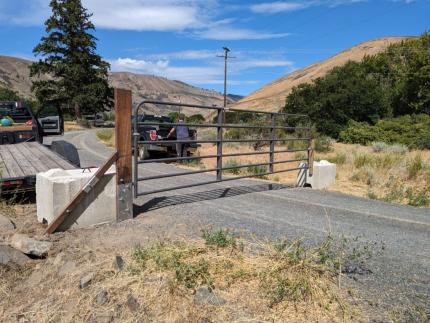
Oak Creek Wildlife Area Gates: Close worked on painting and updating signage on gates throughout the Oak Creek Wildlife Area.

Other
L.T. Murray Wildlife Area Grazing: LT Murray Wildlife Area Natural Resource Worker Schneider and Assistant Manager Winegeart completed vegetation monitoring and pasture evaluation for the Quilomene Unit Lower Parke pasture.
Donald Wapato Fire: A July 2023 wildfire burned approximately 78 acres of the I-82 Ponds Unit of the Sunnyside/Snake River Wildlife Area along the Yakima River. Wildlife Area Manager Kaelber and Assistant Manager Jahns walked the perimeter of the fire to assess the habitat damage and calculate approximate acreage impacted.
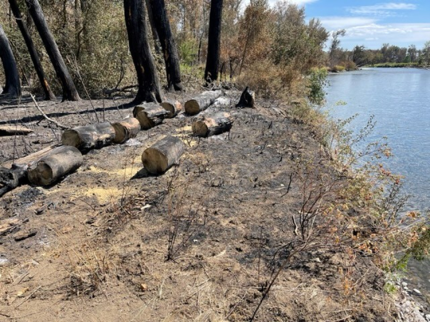
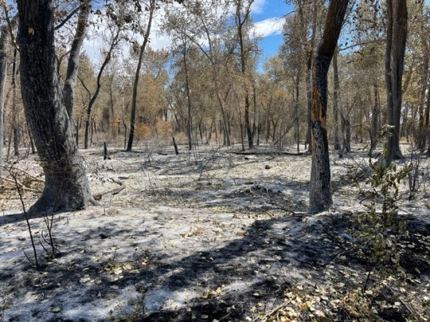
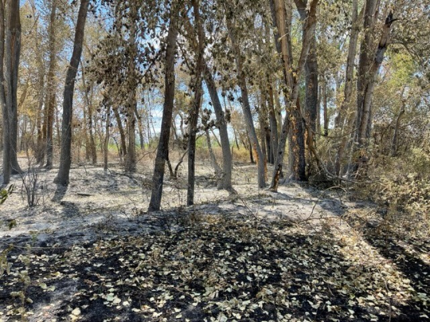
Managing Wildlife Populations
Northwestern Pond Turtle Population Estimate: From June 8 through June 28, Biologists Wickhem and Bergh and Technicians Motiff and Leipold deployed 35 turtle hoop traps at a site in Skamania County and checked traps daily. The traps were spread across three water bodies that are known to contain both Northwestern pond turtles and Western painted turtles. Every year, the district performs a mark-recapture trapping effort at one turtle site to generate a population estimate. All captured turtles are individually marked and the number of times each individual is captured is recorded. The number of captures and recaptures is plugged into a model (along with other variables) which will generate an estimated number of turtles present at the site. This season, the crew caught 35 individual pond turtles and 193 individual painted turtles with a total of 482 captures (including recaptures). We will be anxiously waiting for Science Division staff members to give us the population estimate. During the last trapping effort at that site, we captured 52 pond turtles and 111 painted turtles. It appears that the pond turtle population has declined, and the painted turtle population has increased. The crew also euthanized six bullfrogs and numerous non-native fish, such as bullhead, pumpkinseed, and one giant common carp, that were incidentally caught in traps, and they opportunistically removed seven bullfrog egg masses. Bullfrogs are also non-native and are known for eating anything they can fit in their mouths, including turtle hatchlings. Some other interesting observations from the season include a gravid female pond turtle caught on the first day who weighed 60 grams less the next time she was captured, catching a turtle who had not been captured since 2010 when he was released at a site approximately 2.7 miles away, the capture of a wild-born hatchling for the first time at this site, several turtles who were missing legs, including two painted turtles that were each missing two legs, but otherwise seemed to be getting along just fine, and a painted turtle that was naturally shedding its scutes. Special thanks to all the folks that assisted with trap setting, checking and take-down, including Research Scientist Amburgey, staff members and volunteers from the U. S. Fish and Wildlife Service, and staff members from the Cowlitz Tribe.
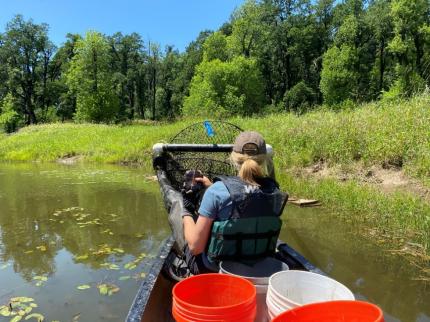
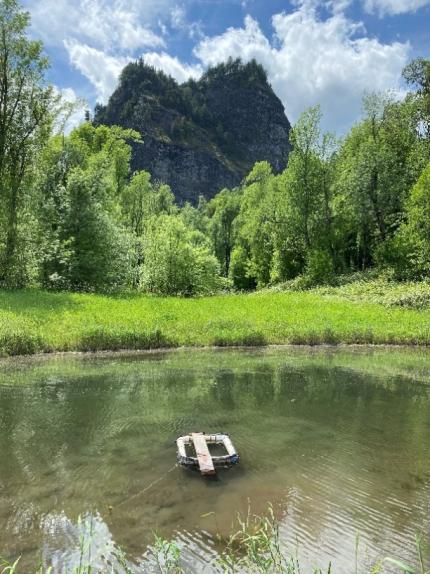
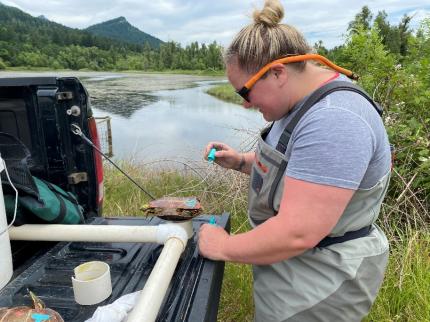
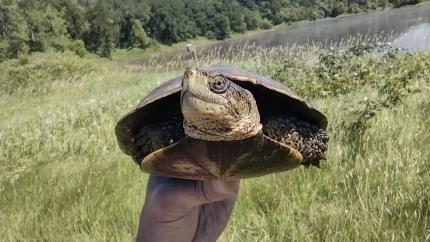
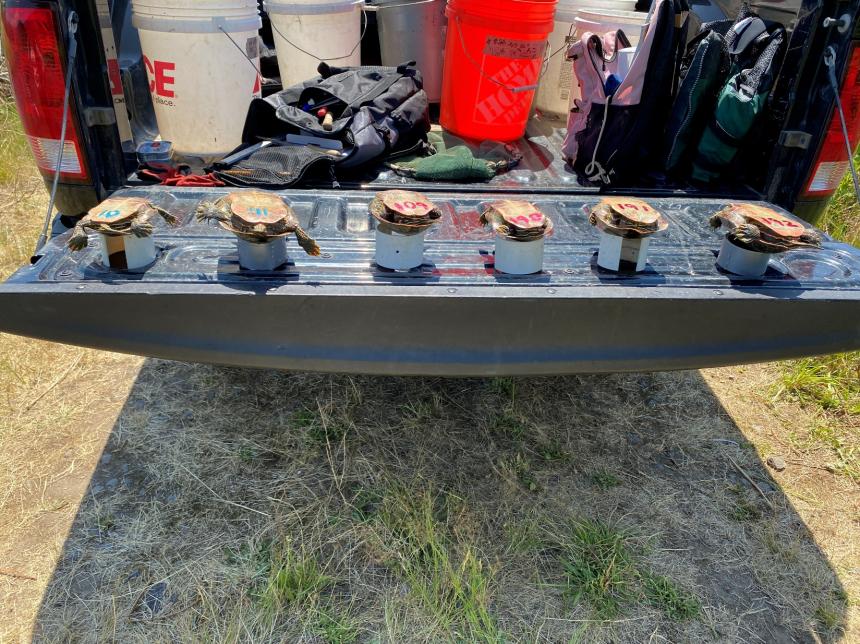
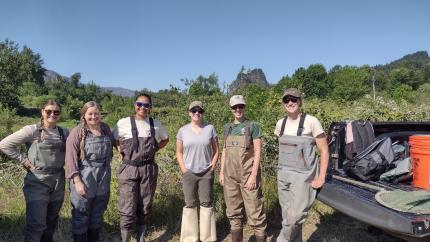
Bat Survey Grids: Biologists Bergh and Wickhem conducted bat acoustic surveys at two grid cells as part of a larger national effort to document bat populations known as NABat. Acoustic detectors are set out in areas within the grid cells that are likely to have high bat usage (near water, in forest openings, etc.) and record the echolocation calls of bats during their active flying period between dusk and dawn. The calls are used to identify species and are used with other survey data to help to track bat populations at both the local and national scale.
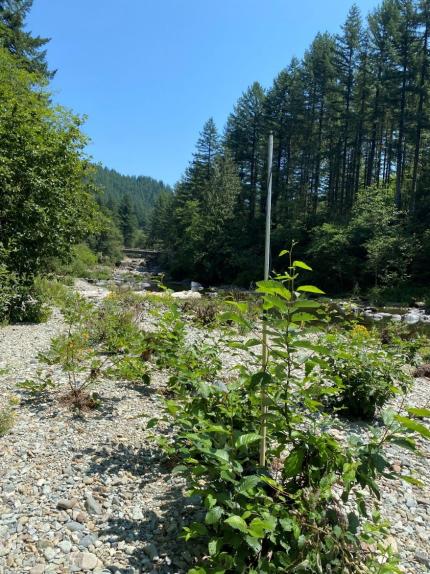
Klickitat Mule Deer Mortality Investigation: Biologists Wickhem and Bergh investigated a collared mule deer mortality this week. The deer had died on the eastern slope of Mount Adams on the Yakama Reservation. They were joined by several staff members from the Yakama Nation Department of Natural Resources. The team was treated to blue skies and excellent views on their drive and hike into the deer’s final GPS point. The carcass had been dragged a short distance and a majority of the internal organs were consumed. After skinning the neck of the deer, the crew found significant trauma to the neck, puncture wounds and internal bleeding, that indicate the deer was likely killed by a cougar. As they were packing up, Bergh even found what looked like the “shed” of a cougar claw! Thanks to the Yakama Nation staff members who assisted with access and retrieval of the deer collar and samples from the carcass.
These deer are part of a four year study being conducted throughout GMUs 388 and 382 to track the annual movements of female mule deer and locate important migration corridors. Staff members are also attempting to determine cause of death when an animal dies, which has proven to be difficult. In the winter of 2021, 81 collars were deployed throughout GMUs for this effort. Twenty-two collars were deployed in the winter of 2022 through 2023. In the winter of 2023, most of the deployments were redeployments that replaced study deer that died over the first two years of the study. We are nearing the end of the study, so these collars will not be redeployed for this project.
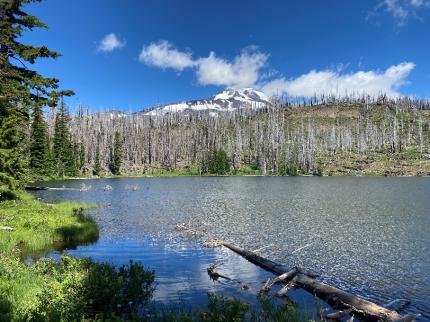
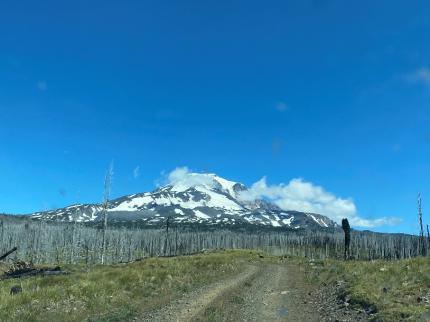
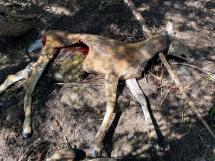
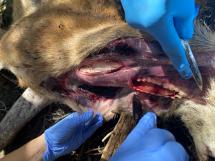
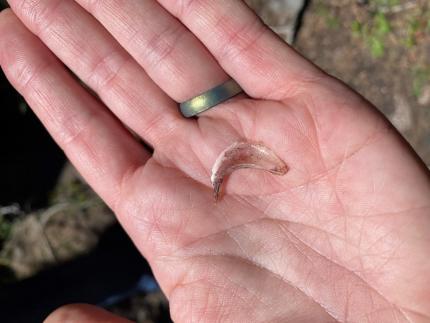
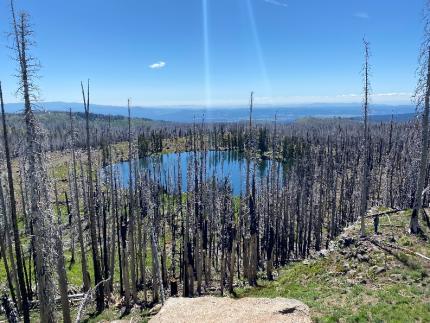
South Cascades Fisher Survey: In June and July, Biologists Stephens and Holman removed 15 fisher monitoring stations that were deployed in the fall of 2022. Habitat Biologists Salter and Adams, Fisheries Biologist Olk, and Customer Service Specialist Kean assisted with the work as well. The stations feature a lure and bait combination set opposite to a motion-detection camera. They are placed ten-feet off the ground to allow for snow accumulation. In total, 107 of these stations deployed in the Southern Cascades between the Columbia River and Interstate 90, by staff members and partners from WDFW, Department of Natural Resources (DNR), U. S. Forest Service, U. S. National Park Service, Woodland Park Zoo, Conservation Northwest, and the Muckleshoot and Puyallup tribes.
Five of the 15 stations set and retrieved by Stephens and Holman captured fishers. Data for the project overall will be summarized by Wildlife Diversity Biologist Lewis and will provide insight into the success of the South Cascades fisher reintroduction effort. Specifically, the project will demonstrate how much of the landscape is now occupied by fishers, six years post-reintroduction. The cameras also collected images of many additional wildlife species. Enjoy some examples below.
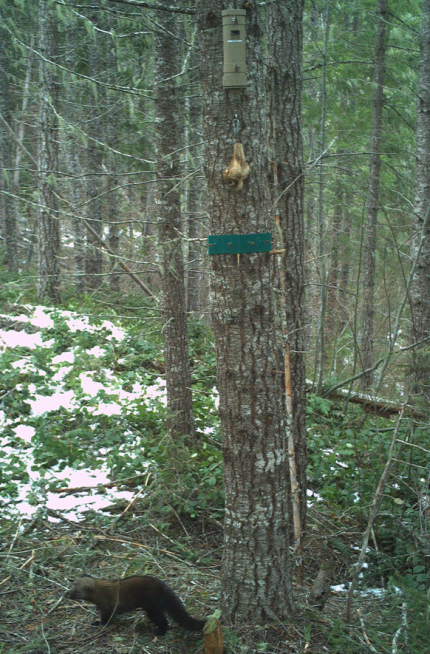
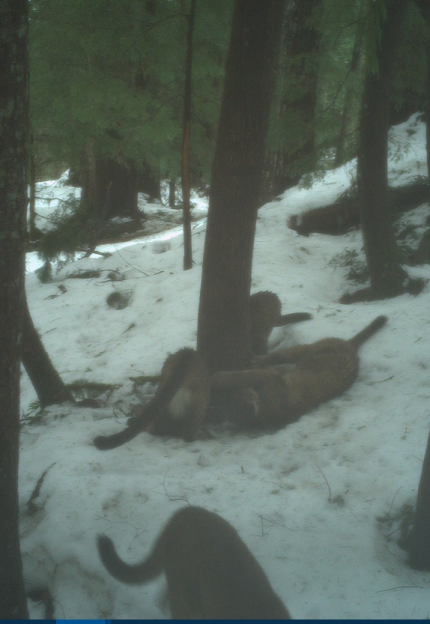
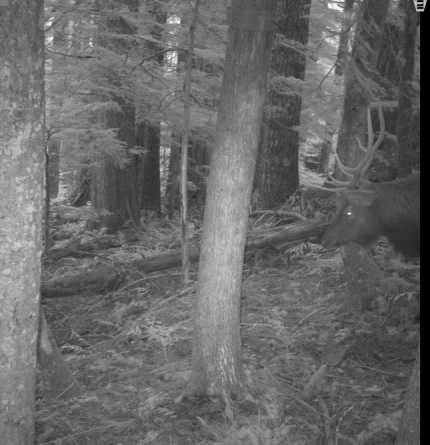
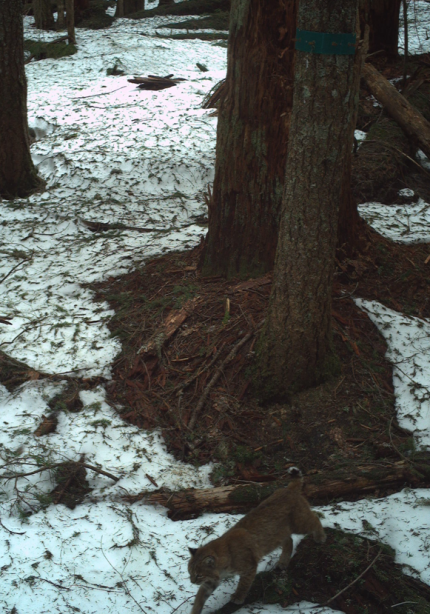
Providing Conflict Prevention and Education
Bears in Dumpsters: Wildlife Conflict Specialist Jacobsen, Officer Nelson, and Officer Myers responded to multiple reports of bears accessing attractants and in close proximity to humans in an Appleton neighborhood. One resident, who had been having issues with bears climbing in her large dumpster, attempted to chain the lid closed. Unfortunately, the bear had other ideas and crushed the lid and tipped over the dumpster. Jacobsen tried multiple times, unsuccessfully, to reach the garbage disposal company to discuss potential solutions. In the meantime, Jacobsen and Officer Nelson erected an electric fence around the dumpster to prevent access by bears.
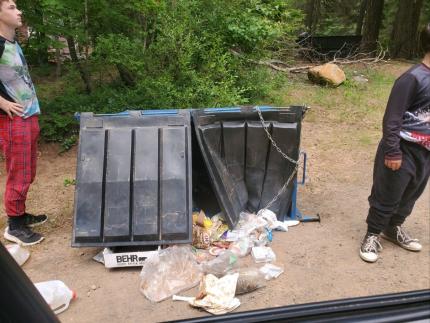
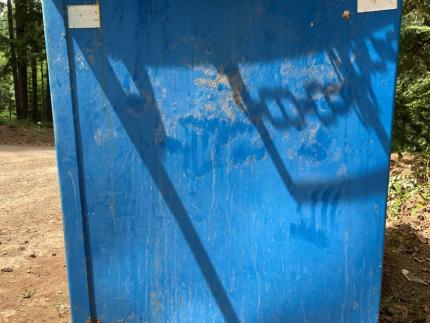
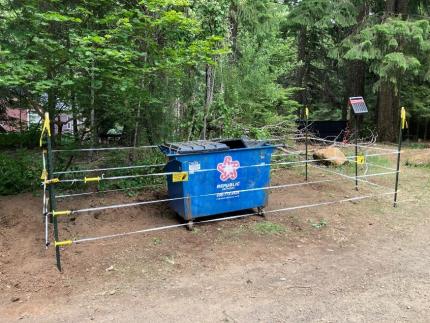
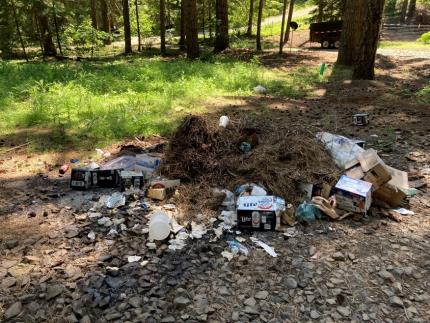
Bear Concerns: Wildlife Conflict Specialist Jacobsen met with a landowner who had been having issues with a bear climbing in her dumpster. After providing advice on securing the dumpster, Jacobsen provided advice to the homeowner regarding several different attractants on her property. While there, Jacobsen noticed a bin of unsecured chicken feed next to an unsecured chicken coop. Jacobsen provided advice to the homeowner on properly securing the chicken coop with electric fencing and he offered assistance with installing the fence. The homeowner declined the offer for help but indicated she would put up a fence promptly. Two weeks later, a neighbor reported to Jacobsen that a bear had destroyed the unsecured chicken coop and killed several chickens.
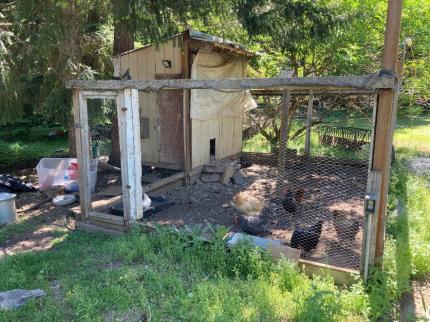
Bear-Proof Garbage Can Update: Wildlife Conflict Specialist Jacobsen and Biologist Bergh have been working with the U. S. Forest Service (USFS) on bear-trash issues at local campgrounds within the Gifford Pinchot National Forest. Recently, USFS staff members installed bear-proof containers at multiple sites where bear conflicts have historically occurred.
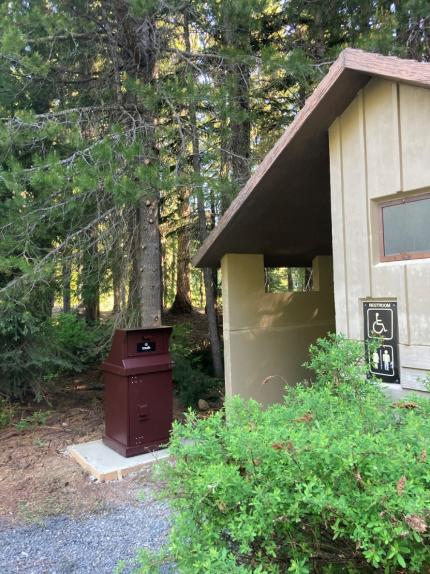
Bear Sighting: Wildlife Conflict Specialist Jacobsen fielded a report of a young black bear caught on Ring camera on a resident’s porch.
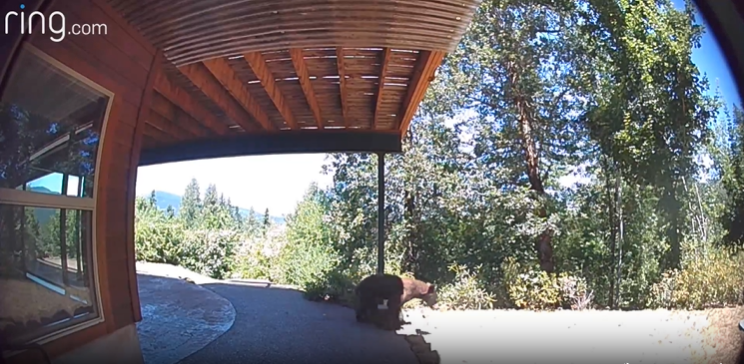
Wildlife Conflict Specialist Jacobsen responded to a report of an injured yearling black bear in a neighborhood in Carson. Based on the situation, Jacobsen set a live trap in order to capture and assess the bear. However, the homeowner also had a large industrial dumpster on-site which was filled with household garbage and attracting the bear to the area. Jacobsen addressed this issue with the homeowner.
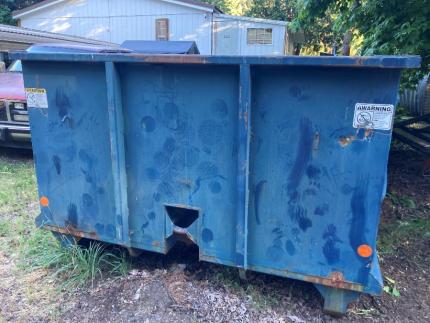

Cougar Concerns: Wildlife Conflict Specialist Jacobsen responded to a request for information regarding a cougar that was observed near the requestor’s house. Advice was provided.
Wildlife Conflict Specialist Jacobsen was contacted by a concerned landlord regarding a dead deer his renters had found on his property. Based on the photographs of the deer, Jacobsen determined that the deer was likely killed by a cougar. Jacobsen provided information on cougar biology and advice on living in cougar country to the landlord.
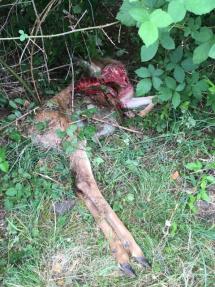
Depredation on Sheep: Wildlife Conflict Specialist Jacobsen, Wildlife Conflict Technician Kolenberg, and Officer Tippets responded to a report of a sheep depredation in La Center. The landowner believed that a cougar was responsible for the depredations on two sheep. Jacobsen conducted a field necropsy and determined that the sheep were killed by coyotes. Jacobsen provided information to the landowner on how to secure the sheep at night when they are most vulnerable to depredations, just like Jacobsen did last summer when the same thing happened to a couple of sheep at the same residence.
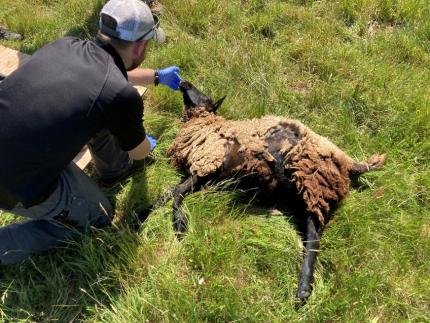
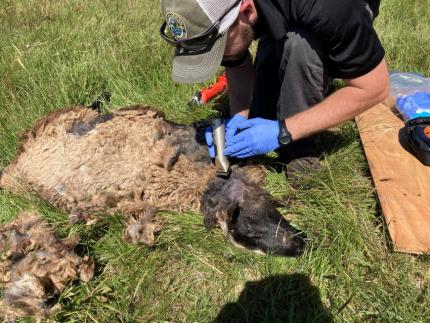
Deer Damage to Christmas Trees: Wildlife Conflict Specialist Jacobsen was contacted by a commercial Christmas tree producer who had been having ongoing issues with bucks destroying his trees. Based on the amount of damage incurred, Jacobsen planned to enroll the producer in a Damage Prevention Cooperative Agreement, pursue fencing options, and utilize public hunters to help address the deer damage.
Haystack Protection: Wildlife Conflict Specialist Jacobsen met with a landowner who has been incurring damage from elk in his alfalfa and forage wheat fields. Unfortunately, the landowner waited until harvest was almost complete to report the ongoing damage. With the hay baled, the landowner was concerned that the elk would come down out of the hills and start consuming the stacked hay as they have in past years. Jacobsen toured the remaining damage and decreased yield in the fields and then installed fladry and a propane cannon around the landowner’s primary haystack to help deter the elk.
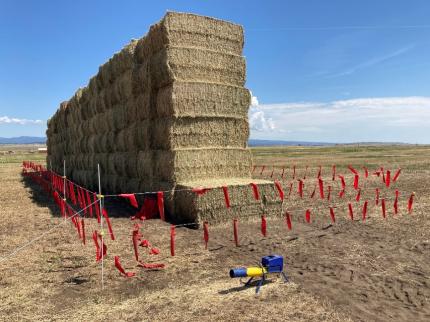
Grazing Season Producer Meeting: Wildlife Conflict Specialist Jacobsen held a meeting one evening with over a dozen livestock producers and land managers regarding wolf updates as they pertain to the current grazing season.
Depredation on Domestic Duck: A concerned landowner contacted Wildlife Conflict Specialist Jacobsen regarding a bobcat that she observed attacking her free-range ducks. Jacobsen provided advice on securing all fowl in a pen or run to protect them from the variety of animals that often prey on free-range domestic chickens and ducks.
Elk Damage to Hay: A livestock producer contacted Wildlife Conflict Specialist Jacobsen regarding elk damage to their hay crop. The producer had been frequented by several dozen head in the Amboy area and they were causing considerable damage to the growing hay as well as cut hay. Wildlife Conflict Technician Kolenberg deployed a propane cannon at the field where the damage was occurring until the hay can be baled and stacked, and Jacobsen will renew their Damage Prevention Cooperative Agreement. The elk have not been back in the field since the cannon was deployed.
Deer Damage to Vineyard: Wildlife Conflict Specialist Jacobsen was contacted by a landowner who has been incurring deer damage to her commercial vineyard. Jacobsen plans to work on some cooperative fencing options for the producer and enroll the producer on a Damage Prevention Cooperative Agreement.
Deer Damage to Residential Landscaping: Wildlife Conflict Specialist Jacobsen fielded a complaint from a homeowner in the Ridgefield area regarding the number of deer congregating on his property. The Ridgefield area is experiencing an exponential degree of land conversion from farmland to housing developments, and deer are being forced into smaller and smaller areas of marginal habitat. Jacobsen advised the landowner that WDFW does not trap and relocate deer out of populated areas and advised the landowner that neither lethal removal nor non-lethal hazing with explosives or projectiles was an option due to local ordinances. Advice on scaring the deer away with coyote howls and coyote urine was provided.
Picking up and Painting new Bear Trailer: A few weeks ago, Wildlife Conflict Technician Kolenberg picked up a new bear trailer from Carnivore Specialist Beausoleil in Wenatchee and transported it back to Region 5. Conflict Technician Kolenberg spent time this past week painting the new trailer.
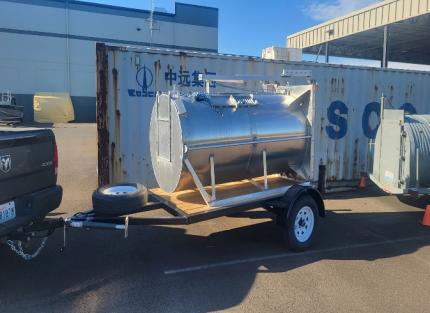
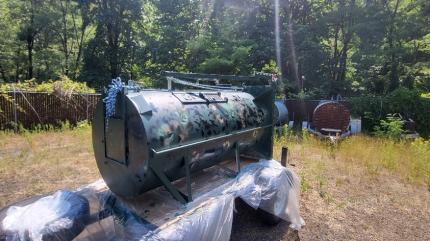
Conserving Natural Landscapes
Controlling Invasives and Mowing Meadows at Cedar Creek Wildlife Area: As part of her initiation to the Wildlife and Land Management team, Technician Crane worked with Assistant Manager Risley to treat invasive weeds species on over 39 acres of meadow at the Cedar Creek Wildlife Area. Weed species on the target list were dalmatian toadflax, meadow knapweed, Scotch broom, and blackberry. Following herbicide treatments, Technician Crane and Assistant Manager Risley mowed the meadows to increase and enhance available fall forage for deer and elk at utilize the wildlife area. While onsite, several band-tailed pigeons were observed roosting in the trees that surround a natural spring water source that the migratory pigeons frequent during their time in the area.
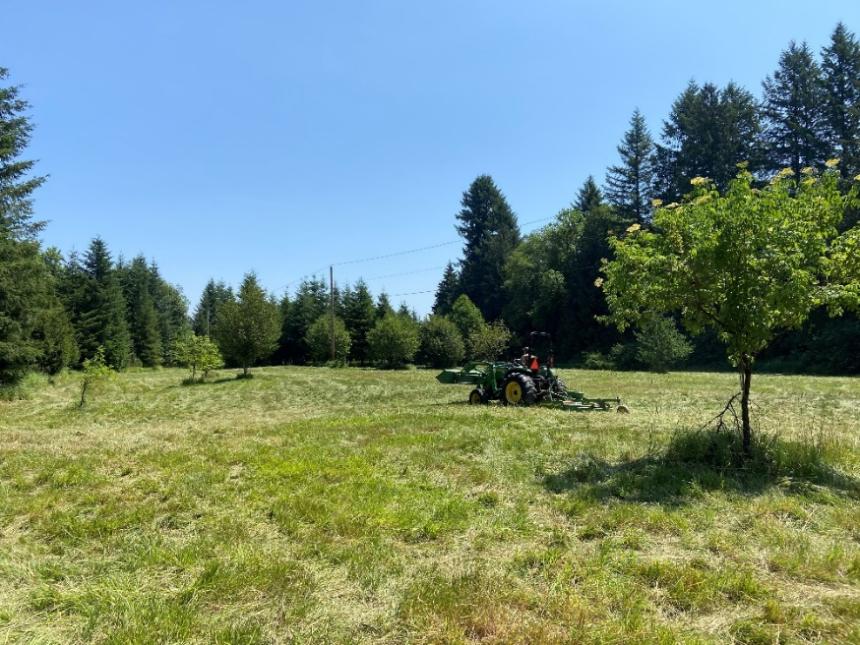
Other
New Access Area Technician: We are excited that Brandon Celaya joined the Region 5 Access Area program. Brandon has a background in forestry and worked for California State Parks. Brandon recently moved to Western Washington with his family, and they are looking forward to exploring our local areas. He enjoys hiking and gardening and he is excited to be a member of our team and is very familiar with the type of work we do at our access areas. We are very happy to have him working with us.
New Mt. St. Helens and Shillapoo Wildlife Area Technician: We are excited that Madison Crane recently joined the Region 5 Wildlife Program team as the new natural resource technician for the Mount St. Helens and Shillapoo Wildlife Areas. Madison is originally from Connecticut and received her bachelor’s degree in wildlife biology from Unity College in Maine. She is currently in the process of finishing her master’s degree from the University of Montana, where her thesis focuses on the resource selection and habitat delineation of pronghorn in Montana. Before starting her master’s degree, Madison worked in several temporary positions for the Bureau of Land Management in Montana, US Forest Service in Oregon and New Hampshire, and Montana Department of Fish, Wildlife, and Parks where her duties included surveying of greater sage grouse, sharp-tailed grouse, short-eared and burrowing owls, songbirds, bats, woodpeckers, raptors, and many vegetation and habitat surveys. She has also assisted in the trapping and marking of mourning doves, bears, and pronghorns. Some of her habitat management work has included collecting and mapping vegetation data, control of invasive species, maintenance of trucks and UTV’s, assisting with National Enviromental Policy Act (NEPA) reports and recommending habitat and wildlife management actions. Madison enjoys spending time outdoors with her dog Aldo. We are very happy to have her working with us.
